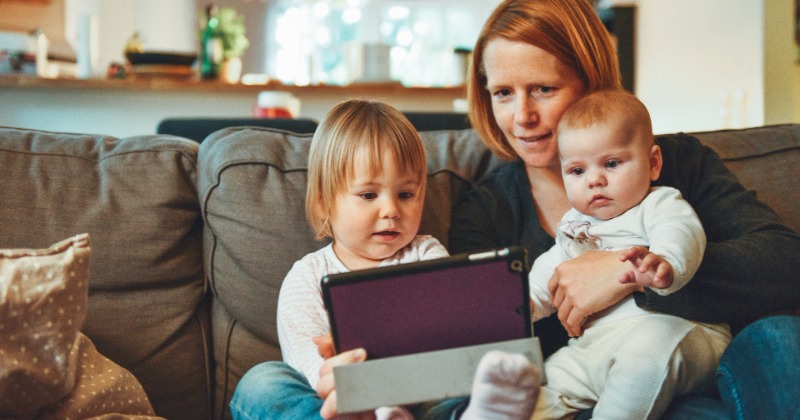Positive or healthy screen time refers to time spent using a device for educational or prosocial purposes, such as doing schoolwork, socialising with friends and family, making art or music, or relaxing.
Except for the rare video conference with family members, young children under the age of two should not be exposed to any form of screen. Children between the ages of 2 and 5 shouldn’t watch more than an hour of television every day; the less, the better.
It’s crucial to strike a balance between screen time and other activities for teenagers that are necessary for their general development. These include an hour of physical activity (play time), a suitable amount of sleep (required sleep time varies with age; for instance, adolescents require 8–9 hours of unbroken sleep at night), and other activities. Screen time should be limited if it prevents you from engaging in any of these activities.
Excessive screen time has a number of negative impacts on children, including obesity, sedentary lifestyle, disturbed sleep, headache, eye strain, neck, back pain, delayed speech, hyperactivity, anger, and violence, instant gratification syndrome, lack of focus, media addiction, cyberbullying, distorted perception of sex due to pornographic exposure, drug usage, self-harm, anxiety, depression, decreased socialisation, and poor grades.

Unsplash/Representational Image
Healthy use of digital device
Parents should formulate “digital rules” to encourage healthy media usage when the child begins to use a digital device. Age-appropriate guidelines should be included, and as the child becomes older, additional ones could be added.

Unsplash/Representational Image
A few rules for maintaining “digital hygiene” are to ensure a warm, nurturing, supportive, fun-filled, and secure environment at home. If regulations are taught to kids in a courteous and sympathetic way, they will follow them.
Never distract or settle down a toddler with a screen. Maintain a healthy balance between screen usage and time allotted for rest, exercise, study, family time, meals, and hobbies.
One hour before sleep, screens should be turned off because the blue light devices emit affects sleep. All digital gadgets should be turned off while performing homework. By keeping an eye on their online connections, you can keep kids safe. Avoid programs and games with violent content. Additionally, make sure your browser and apps are using secure search engines, antivirus software, and suitable privacy settings to prevent young children from visiting inappropriate websites.
Encourage the use of media for educational objectives, as well as offline creative games and physical activity. Use “teachable moments” in the media to convey family values, healthy lifestyle, and interpret media messages.
Mark places in the house where no one in the family uses a device, such as the bedroom, dining table, kitchen, bathroom. Choose a time during the day when no one in the family uses any technology, and make use of that period to spend time together. You should create a family media consumption strategy and serve as an example of responsible media use.
About the author: Dr. Kamalakshi Bhat is a Consultant in Pediatrics, KMC Hospital, Mangalore. All views/opinions expressed in the article are of the author.


